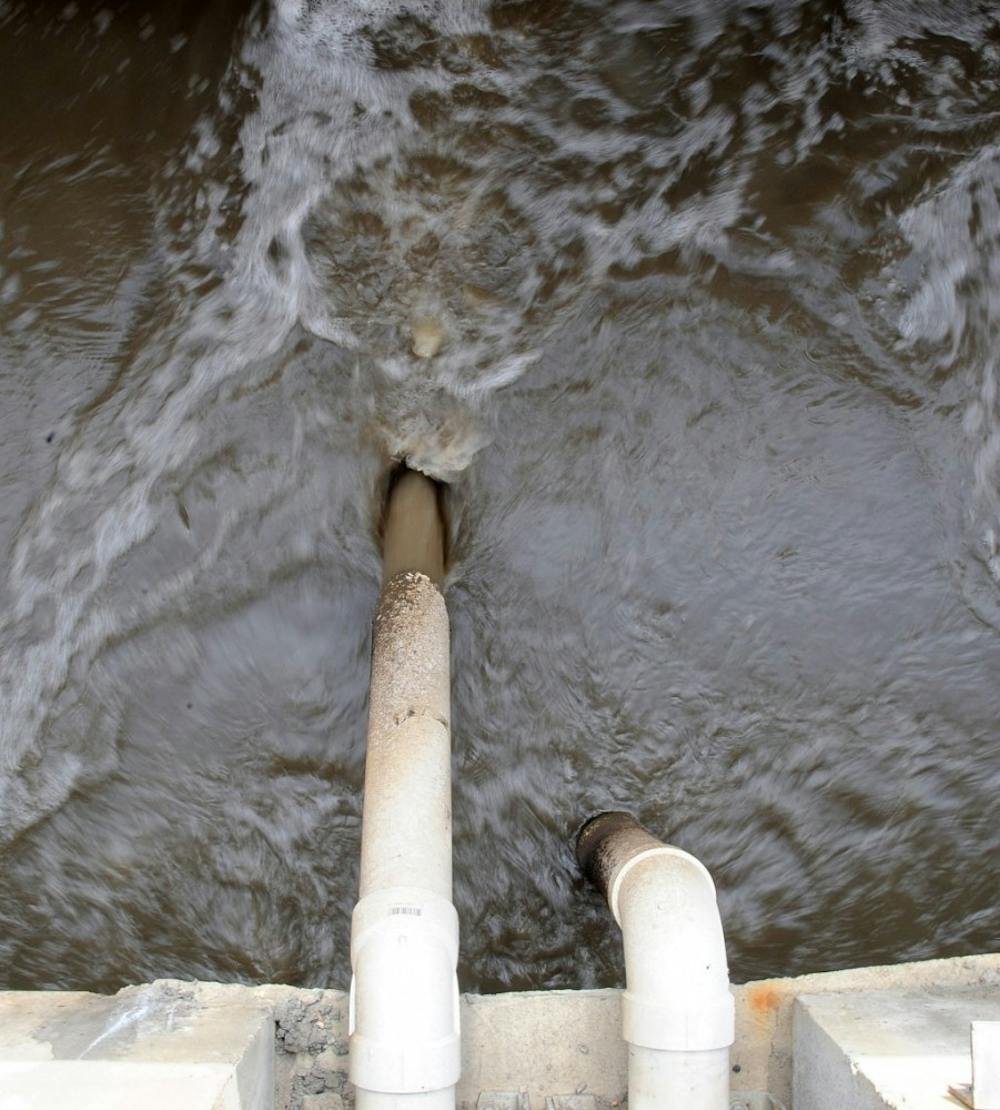More than 3.5 million gallons of wastewater spilled into the Haw River after a pipe broke at a Burlington treatment center Jan. 27. The pipe took almost three days to repair, and officials say the spill is mostly cleaned up.
This is Burlington’s third raw sewage spill in January. On Jan. 11, 50,400 gallons of wastewater leaked into a tributary of Haw River, and on Jan. 24, a broken pipe spilled 28,600 gallons into the same area as the most recent spill.
While state officials were notified about the spill the night it happened, the public was not alerted until after its containment Jan. 30. State law mandates water systems notify the public about leaks of more than 1,000 gallons within 48 hours, but the City of Burlington chose to delay their disclosure.
N.C. Department of Environment and Natural Resources spokeswoman Susan Massengale said Burlington granted the department permission to delay the release of information past the 48 hour deadline. Division of Water Quality supervisor Corey Basinger said officials wanted to wait for accurate information to come in before releasing a statement to the public.
“It was an ongoing incident and the regulatory agency wanted to report the correct information. They wanted to inspect the site, but they didn’t want to be in the way of all the folks trying to stop the spill,” said Eric Davis, Burlington’s water and sewer operations manager.
A winter storm advisory came in on Jan. 28, officials wanted to get the scene cleared before the storm moved in. But as inclement weather postponed the arrival of personnel and equipment, the spill could not be contained within the usual two-day period.
Though the public was not alerted to the spill, Davis said it was not dangerous.
“We closed the park and the walking trail, and we didn’t think people would be on the river since it was covered in sheet ice,” he said.
The Haw River Assembly put out a statement warning community members to stay out of the river this week. The statement said the spill’s impact on algae growth, aquatic life and drinking water will last until the rain dilutes the pollution.
The assembly called the wastewater spill an “environmental disaster” and said the cold weather was the only thing that kept the incident from becoming a public health disaster as well.
Calling the city officials’ choice to withhold information “unacceptable,” the assembly demanded stricter safety measures and public notification systems.
Pittsboro, which gets its drinking water from the Haw River, was notified of the spill as soon as the leak was detected. Biological tests showed no impact on the water quality in Pittsboro. Burlington officials said they do not expect any long-term environmental effects from this spill or the past two spills.
“The biggest threat to the environment is the oxygen demand that the sewage exerts on the stream. When the sewage enters the waterway, it consumes a lot of oxygen. The oxygen depletion threatens the organisms in the river,” Davis said. “With the water as cold as it was, there wasn’t a lot of bacterial action. From an environmental standpoint there wasn’t a huge threat.”
In relation to the 400 million gallons that ran through the Haw River during the two days of the leak, 3.5 million gallons are of little consequence to the overall water quality.
The Haw River Assembly’s statement said the spill “brings up serious concerns about aging infrastructure--is it being inspected, repaired and replaced before any further disasters to public waters occur?”
The Burlington sewage system usually deals with eight to 10 minor leaks per year. So far, the system has experienced more spills than normal. Due to the location of the leaks along the sewage line, the spills have also been more serious.
In the last three spills, the pipes have been compromised closer to the wastewater treatment plants. Pipes closer to the plant carry more sewage, making it harder to contain and re-route the lines.
“Much of the infrastructure of America, and definitely including sewage movement, is old and apt to fail. This infrastructure is not normally replaced prior to failure, thus causing frequent breaks, and thus spills,” said Paul Moersdorf, adjunct professor in the environmental studies department at Elon University.
Burlington’s wastewater system is comprised of 420 miles of sewage lines. Only about 10 miles of the system are inspected and repaired each year due to time and resource constraints.
While Davis agrees that the infrastructure could use updating, he said not all problems are related to the condition of the pipes.
“With the Jan. 11 leak, there had been a lot of rain, which contributed to the volume of that spill,” he said. “When we got to look at the line, we saw somebody had thrown a pressure tank in the sewer. Somebody opened a manhole and stuck a pressure tank in there. That’s not related to infrastructure, that’s vandalism.”


